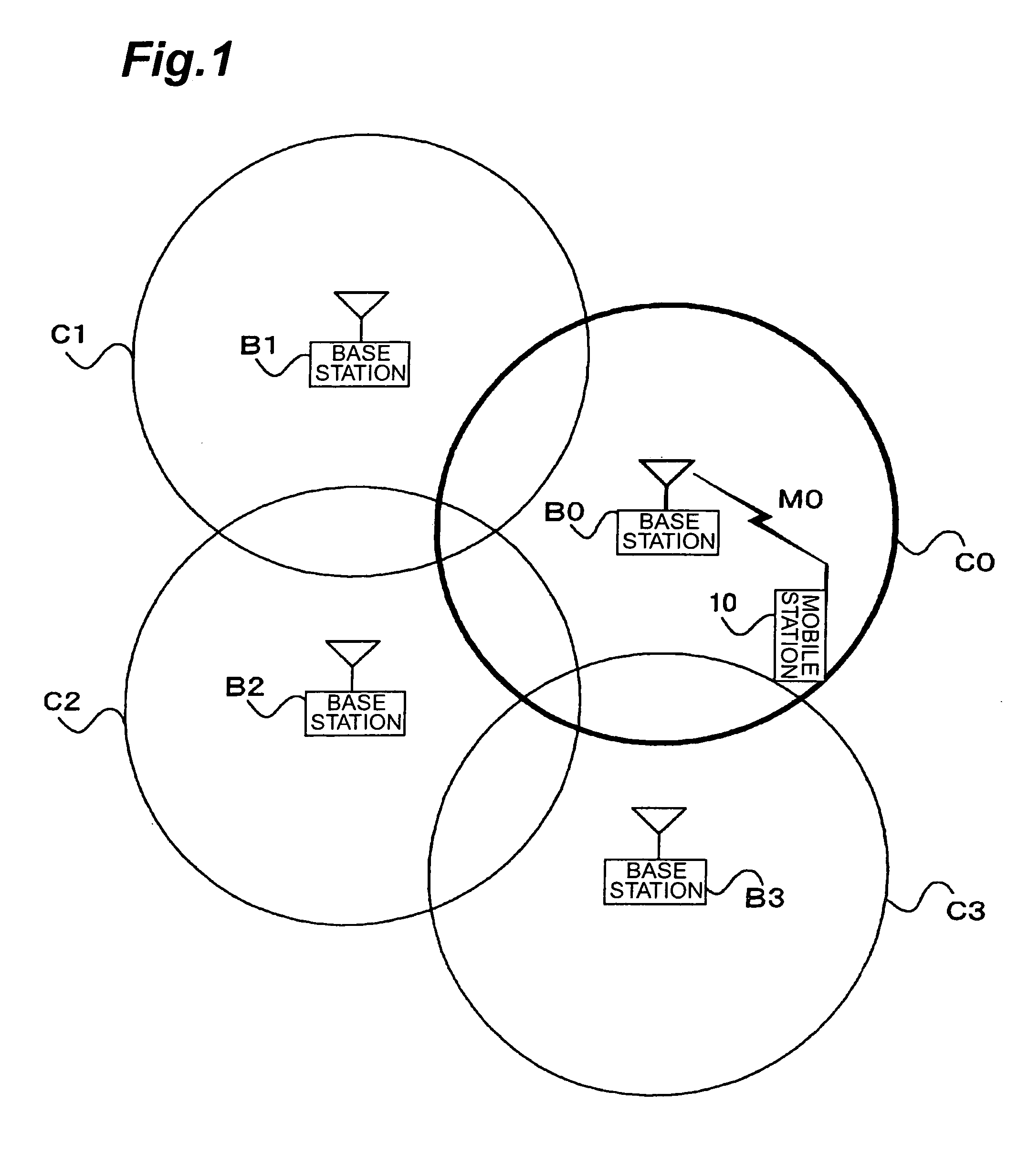Mobile station, mobile communication system, and cell selection method
a cell selection and mobile communication technology, applied in the field of mobile stations, can solve the problems of inability of mobile stations to select the optimal cell for communication, inability to consider cell selection in the aforementioned prior art, etc., and achieve the effect of stabilizing good communication quality and not deteriorating the communication quality of the serving cell
- Summary
- Abstract
- Description
- Claims
- Application Information
AI Technical Summary
Benefits of technology
Problems solved by technology
Method used
Image
Examples
first embodiment
The first embodiment of the present invention will be described below in detail with reference to the drawings.
FIG. 2 is a conceptual diagram showing a configuration of a mobile communication system in the present embodiment. As shown in FIG. 2, mobile communication system 100 is comprised of mobile station 1, base station B10, base stations B11-B13, and base stations B21-B22. Mobile station 1 is camped on cell C10 established by base station B10. Cells C11, C12, and C13 established by the respective base stations B11, B12, and B13 exist as indoor cells neighbor to cell C10, and cells C21 and C22 established by the respective base stations B21 and B22 exist as outdoor cells neighbor to cell C10. In FIG. 2, the indoor cells are indicated by dashed lines and the outdoor cells by chain lines.
Base station B10 notifies mobile station 1 of information indicating that cells C11-C13 and cells C21, C22 exist as neighboring cells and, in addition thereto, information (identification infor...
second embodiment
Subsequently, the second embodiment of the present invention will be described with reference to FIGS. 11 to 14. Since the mobile communication system in the second embodiment includes the components and processes common to those in the mobile communication system in the first embodiment, only differences from the first embodiment described above will be detailed below.
Specifically, the cell selection technology in the first embodiment involved no consideration to existence of mobile cells as one of the cell forms. A mobile cell is constructed by a moving object such as a train, a bus, or the like, and is a cell having a mechanism capable of maintaining communication between a mobile station in the cell and the mobile communication system while keeping the configuration even with movement in the mobile communication system. A mobile base station communicates through a radio link with external base stations (outdoor cells and indoor cells) and a mobile station in the mobile cell i...
PUM
 Login to View More
Login to View More Abstract
Description
Claims
Application Information
 Login to View More
Login to View More - R&D
- Intellectual Property
- Life Sciences
- Materials
- Tech Scout
- Unparalleled Data Quality
- Higher Quality Content
- 60% Fewer Hallucinations
Browse by: Latest US Patents, China's latest patents, Technical Efficacy Thesaurus, Application Domain, Technology Topic, Popular Technical Reports.
© 2025 PatSnap. All rights reserved.Legal|Privacy policy|Modern Slavery Act Transparency Statement|Sitemap|About US| Contact US: help@patsnap.com



